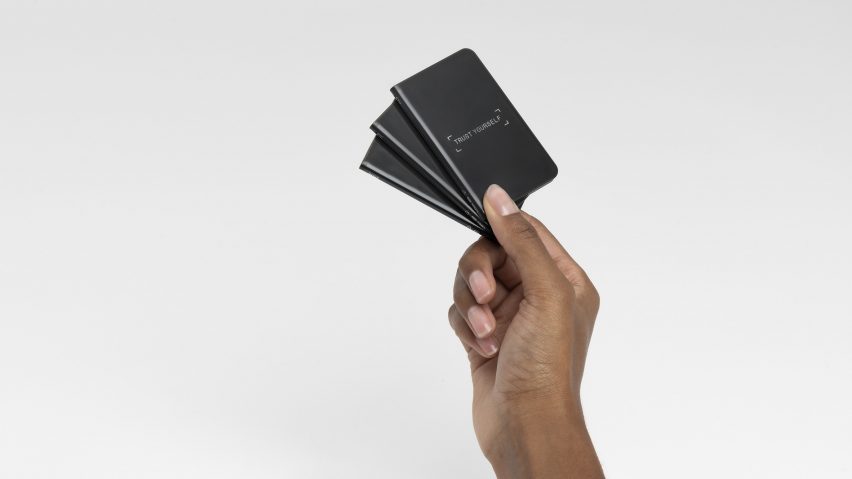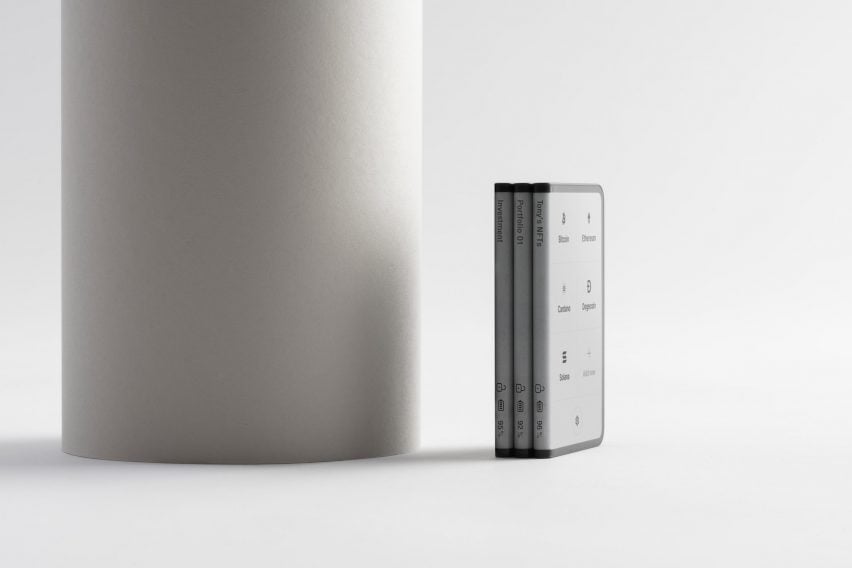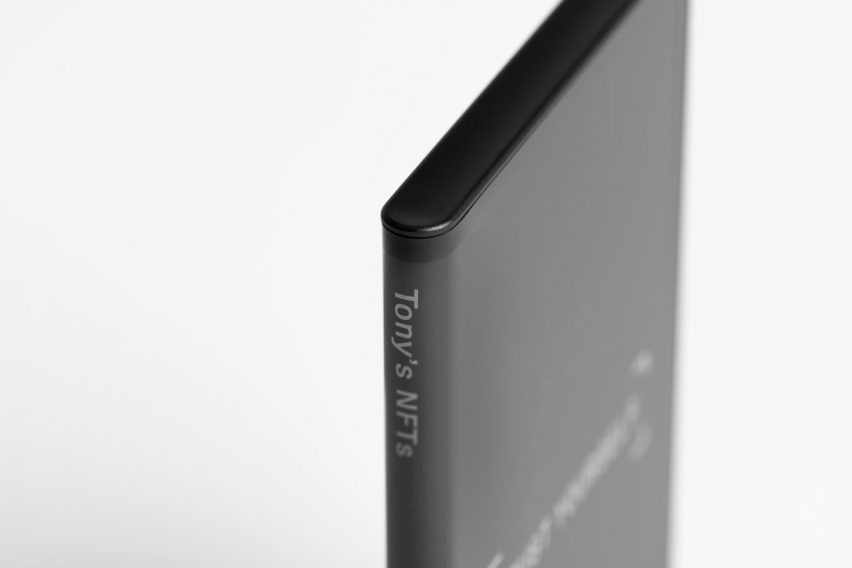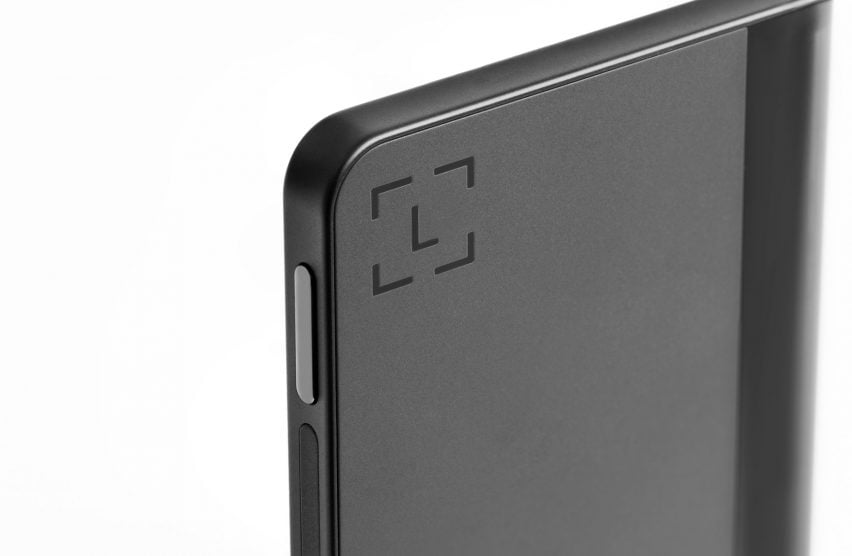
Layer designs Ledger Stax hardware wallet for storing cryptocurrency
Design studio Layer has collaborated with tech brand Ledger and designer Tony Fadell to produce Ledger Stax, a screen-wrapped, credit card-sized device for storing cryptocurrency and NFTs.
Ledger Stax is a hardware wallet — a device that stores the digital keys needed to encrypt and decrypt crypto assets offline, where they're considered to be most secure. Users can also view and send their cryptocurrency and non-fungible tokens (NFTs) through the device.
Layer developed the product with French company Ledger, which has previously designed the Nano hardware wallets. The initial idea came from Fadell, who led iPod development at Apple and co-founded Nest Labs, now Google Nest.

Ledger Stax is built on the same architecture as the Nano series, but has a unique form that Layer says elevates the experience of interacting with cryptocurrencies and NFTs.
Its distinctive feature is an e-ink screen that wraps around the front surface and spine of the device, allowing for intuitive touch interaction and, given the technology's energy efficiency, a battery life of weeks or months.
Layer founder Benjamin Hubert considers the e-ink screen an "underused" technology that fits perfectly with the heavily text-based needs of Ledger Stax and allows it to have a different type of design language, free of the expectations set by phones.
Photos or NFTs can be displayed in greyscale on the lock screen, helping to personalise the device, which is around the same size as a credit card but a little thicker, with a six-millimetre-wide spine.

The design also invites the stacking of multiple devices in the manner of physical currency or conventional ledgers. Adjacent devices will magnetically hold together, giving users the ability to organise their portfolios across separate devices while clearly identifying them from the labelling on the spine.
As well as allowing users to manage their crypto assets, Ledger Stax can be used to explore Web3 apps through the Ledger Live app, which also connects the device to a smartphone.
The device has an aluminium casing that Layer says gives it a reassuring weight in the hand and emphasises its secure nature. Its soft edges allow for easy grip.
In addition to the touchscreen, it has a single button providing the functionality to power the device on and off, and lock and unlock the screen.

Layer has been working on Ledger Stax for two years. Hubert believes that although the value of cryptocurrencies has plummeted in recent months, it has never been a better time to launch the product, as it provides people with an alternative to using centralised exchanges for storage.
"Crypto market ebb and flow aside, the need for people to understand how to and why they should take their assets into their own hands has grown in the wake of recent news," Hubert told Dezeen. "A popular expression in the world of crypto is 'not your keys, not your coins', which refers to needing to own the private keys associated with your funds."
"It has never been more appropriate with the struggles a number of centralised exchanges have been dealing with — most notably, the collapse of FTX — and the tragic fallout for the average person," he continued.
"Ledger's secure architecture will continue to lead the way in that regard, and Ledger Stax could not come at a better time."

According to Hubert, its e-ink screen also makes Ledger Stax more sustainable than many other consumer devices as this technology draws less power and only when it refreshes, rather than constantly as O-LED screens tend to.
Sustainability is an area where cryptocurrency and NFTs have previously come under criticism, due to the amount of computer processing power that they require. However, Hubert says that more energy-efficient solutions are slowly being offered, pointing to Ethereum's switch from using a proof-of-work to a proof-of-stake model earlier this year as an example.
"As crypto continues to mature, there will likely be more of this – and there are already many other players in the space that offer sustainability as part of their ethos," said Hubert.

The designer, who has what he describes as a "moderate investment" in the cryptocurrency Ethereum, says the project suited Layer's interest in working with technologies that enable and complement cultural shifts.
"Like any market, Ethereum has its ups and downs but I think it has a promising future," said Hubert. "It's exciting to be part of an emerging financial market, and working with Ledger has only cemented my belief in the potential of crypto."
Ledger Stax is Layer's second crypto product following Trove, a system incorporating a watch-like wearable device. The studio regularly works in the tech space, and has also recently designed smart glasses for Viture and a meditation headset for Resonate.